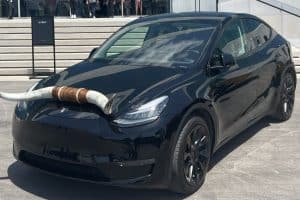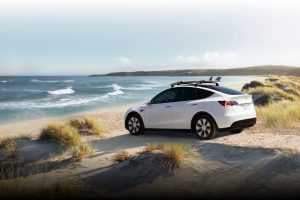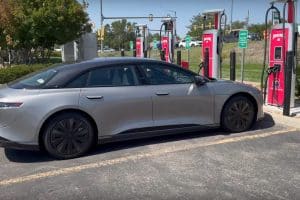- 💡 Rivian is adopting Tesla’s strategy of using a heat pump in its new R2 platform to combat range loss.
- 🔥 Tesla previously developed the heat pump for its EVs to recycle heat produced by the car into the cabin.
- ❄️ Traditional resistance heating systems used by Tesla had drawbacks, particularly affecting range in cold weather.
- 🚗 CEO RJ Scaringe confirmed that the R2 would feature the heat pump, which was not utilized in the R1T.
- 💰 The R2 platform is expected to be more affordable and equipped with new features, with the heat pump being a significant contributor to its improvement.
- 📦 The R2 is set to start deliveries in 2026 and could potentially establish Rivian in the mass market EV sector.
In the ever-evolving landscape of electric vehicles (EVs), innovation is key to staying ahead of the competition and addressing consumer concerns. One such concern that has long plagued EVs is range loss, especially in colder climates. However, Rivian, a prominent player in the EV market, seems to have found a solution inspired by none other than Tesla – the heat pump.
The Rise of the Heat Pump: A Game-Changing Strategy
Understanding the Heat Pump Concept
The heat pump, initially pioneered by Tesla for its electric vehicles, is a revolutionary technology that recycles heat produced by the car and redirects it back into the cabin. Essentially functioning as a reverse air conditioner, the heat pump helps to maintain optimal cabin temperature without draining the battery excessively.
Overcoming Traditional Limitations
Before the advent of the heat pump, EVs primarily relied on resistance heating systems, which, although effective, had significant drawbacks, particularly in cold weather conditions. These systems often led to a notable decrease in range, a concern that hindered widespread adoption of EVs in regions with harsh winters.
Rivian’s Strategic Move: Embracing the Heat Pump
Following in Tesla’s Footsteps
Rivian’s decision to integrate the heat pump into its new R2 platform demonstrates a strategic alignment with Tesla’s approach to combatting range loss. By adopting this well-established strategy, Rivian aims to address one of the most pressing concerns of EV owners – maintaining range performance in diverse weather conditions.
CEO Confirmation and Implications
With CEO RJ Scaringe confirming the inclusion of the heat pump in the R2 platform, Rivian signals its commitment to innovation and customer satisfaction. This move not only enhances the competitiveness of Rivian’s offerings but also underscores the importance of continuous improvement in the EV industry.
Looking Towards the Future: The Promise of the R2 Platform
Enhanced Affordability and Features
Beyond the integration of the heat pump, the R2 platform promises to be more affordable and equipped with a plethora of new features. This combination of affordability and innovation positions Rivian as a formidable contender in the mass-market EV sector.
Potential Industry Impact
As Rivian prepares to roll out the R2 platform for deliveries starting in 2026, the industry eagerly anticipates its impact. With its focus on addressing range loss and enhancing overall performance, the R2 platform could mark a significant milestone in Rivian’s journey towards establishing itself as a leader in the EV market.
Conclusion: Driving Innovation Forward
Rivian’s adoption of Tesla’s heat pump strategy underscores the collaborative spirit and shared goal of advancing the EV industry. By leveraging proven technologies and pushing the boundaries of innovation, companies like Rivian and Tesla are driving towards a future where EVs are not just a viable alternative but the preferred choice for consumers worldwide.





